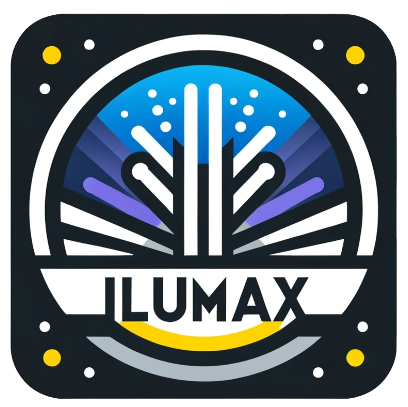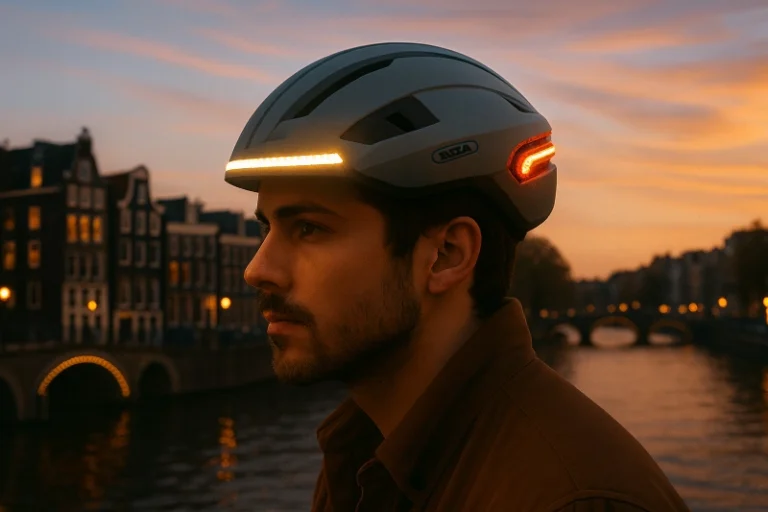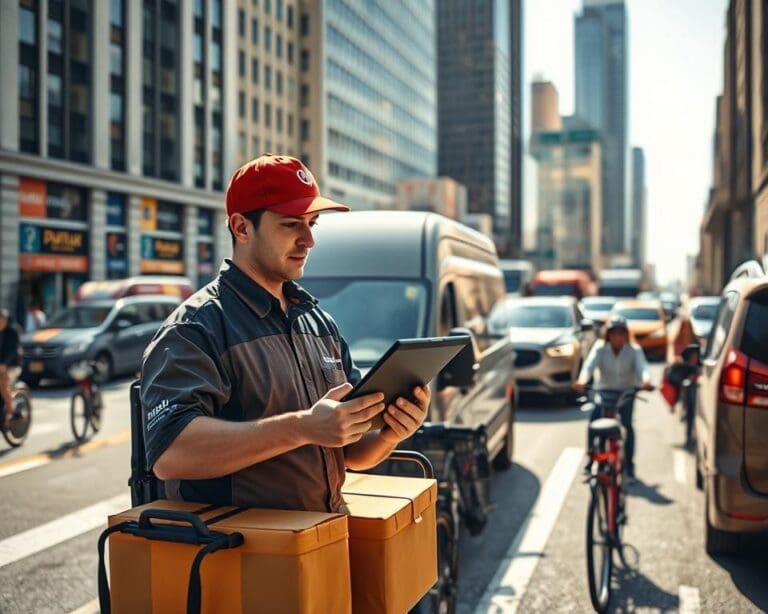De watersport-industrie staat op een spannend kruispunt, aangedreven door de opkomst van elektrische speedboten. Deze innovatieve vaartuigen bieden een revolutionaire manier voor watersportliefhebbers om te genieten van hun favoriete activiteiten op een milieuvriendelijke en duurzame manier. Met hun stille, emissievrije aandrijving en verbeterde comfort, staan deze elektrische speedboten aan de vooravond van een transformatie in de wereld van de pleziervaart.
Milieubewuste watersportliefhebbers omarmen deze nieuwe technologie met open armen, op zoek naar eco-vriendelijke opties die hun passie voor het water kunnen combineren met een zorgvuldige omgang met het milieu. Elektrische speedboten bieden niet alleen een schoner alternatief voor traditionele brandstofmotoren, maar geven ook een nieuwe dimensie aan de watersportbeleving door een stille en comfortabele vaart te bieden.
Key Takeaways
- Elektrische speedboten revolutioneren de watersport met milieuvriendelijke en duurzame aandrijving.
- Deze innovatieve vaartuigen bieden stille en comfortabele vaart, waardoor watersportliefhebbers op een nieuwe manier van hun hobby kunnen genieten.
- Milieubewuste consumenten omarmen deze technologie als een eco-vriendelijke optie voor pleziervaart.
- Elektrische speedboten staan aan de vooravond van een transformatie in de watersport-industrie.
- De opkomst van deze innovatieve boten biedt watersportliefhebbers een duurzamere manier om hun passie voor het water te beleven.
Wat zijn elektrische speedboten?
In de wereld van waterrecreatie maken elektrische speedboten snel furore. Deze innovatieve vaartuigen bieden watersporters een nieuwe, milieuvriendelijke manier om te genieten van de golven en het open water. Maar wat onderscheidt deze elektrische bootmotoren nu eigenlijk van traditionele, benzinegestuurde boten?
Definities en basisbegrippen
Elektrische speedboten zijn pleziervaartuigen die worden aangedreven door een elektrische motor in plaats van een verbrandingsmotor. In plaats van benzine of diesel gebruiken ze oplaadbare accu’s om energie op te slaan en de motor aan te drijven. Dit maakt ze een stuk milieuvriendelijker en duurzamer in vergelijking met hun conventionele tegenhangers.
Onderscheid met conventionele boten
Het grootste verschil tussen elektrische en conventionele plezierboten zit in hun aandrijving en energiebronnen. Traditionele boten maken gebruik van benzine- of dieselmotoren, terwijl elektrische speedboten werken op oplaadbare accu’s. Dit resulteert niet alleen in een stiller en comfortabeler vaargevoel, maar ook in lagere uitstoot en verminderde milieu-impact. Bovendien zijn elektrische boten vaak eenvoudiger in onderhoud en bediening.
- Elektrisch aangedreven in plaats van benzine- of dieselmotor
- Gebruiken oplaadbare accu’s als energiebron
- Stiller en comfortabeler vaargevoel
- Lagere uitstoot en verminderde milieu-impact
- Eenvoudiger in onderhoud en bediening
Voordelen van elektrische speedboten
Als milieubewuste watersportliefhebbers op zoek zijn naar duurzame en emissievrije opties, bieden elektrische speedboten een aantrekkelijk alternatief. Deze innovatieve boten zijn niet alleen eco-vriendelijk, maar bieden ook een stille en comfortabele vaartbeleving.
Milieuvriendelijk en duurzaam
Elektrische speedboten laten geen schadelijke uitlaatgassen achter, waardoor ze een schonere en duurzamere optie zijn voor de duurzame watersport. Ze produceren geen emissievrije boten en minimaliseren de CO2-voetafdruk, wat volkomen in lijn is met de groeiende vraag naar eco-vriendelijke pleziervaart.
Stille en comfortabele vaart
Elektrische aandrijving betekent ook een stille en geruisloze vaartbeleving, in tegenstelling tot de vaak luide motoren van conventionele boten. Dit resulteert in een rustgevende en ontspannen ervaring voor milieubewuste watersportliefhebbers, die kunnen genieten van de natuur zonder gestoord te worden door motorgeluid.
“Elektrische speedboten bieden de perfecte combinatie van duurzaamheid en comfort voor de moderne watersportliefhebber.”
Hoe werken elektrische bootmotoren?
As the world embraces the future of watersports, the technology powering electric speedboats has become a captivating focus. At the heart of these innovative elektrische bootmotoren lies a remarkable system that enables efficient and sustainable maritime adventures.
Unlike traditional internal combustion engines, electric boat motors rely on the principles of electromagnetism to generate propulsion. These innovatieve boottechnologie utilize powerful electric motors that convert electrical energy into mechanical energy, seamlessly driving the boat’s propeller and propelling it through the water.
The key components of an electric boat motor include:
- High-capacity battery packs that store the necessary electrical energy
- Advanced controllers that precisely manage the flow of electricity to the motor
- Efficient electric motors that convert the electrical energy into rotational force
- Lightweight and hydrodynamic propulsion systems that maximize the boat’s speed and range
As the toekomst van watersport unfolds, these cutting-edge electric boat motors continue to push the boundaries of performance, offering a silent, eco-friendly, and thrilling experience on the water.
Elektrische speedboten: Innovatie voor watersportliefhebbers
De wereld van watersport staat op het punt om een ware transformatie te ondergaan, dankzij de opkomst van elektrische speedboten. Deze innovatieve technologie biedt een revolutionaire benadering voor milieubewuste watersportliefhebbers, en belooft de toekomst van de watersport ingrijpend te veranderen.
Revolutionaire technologie
Elektrische speedboten zijn uitgerust met geavanceerde elektrische aandrijfsystemen die een verfijnde en stille vaartbeleving bieden. In tegenstelling tot traditionele benzinemotoren, zijn deze boten vrijwel geruisloos en produceren ze geen schadelijke uitlaatgassen. Dit maakt ze uitermate geschikt voor watersportliefhebbers die op zoek zijn naar een meer duurzame en milieuvriendelijke manier om van het water te genieten.
Toekomstvisie voor de watersport
Elektrische speedboten staan symbool voor een nieuwe generatie watersportvoertuigen die de toekomst van deze industrie zal bepalen. Met hun innovatieve technologie, efficiënte energieverbruik en minimale ecologische impact, bieden deze boten een glimp van wat we in de komende jaren kunnen verwachten. Milieubewuste watersportliefhebbers kunnen verwachten dat deze revolutionaire elektrische speedboten hun maritieme ervaringen zullen transformeren en de weg zullen vrijmaken voor een duurzamere en meer verantwoorde toekomst van de watersport.
Populaire merken en modellen
In de wereld van elektrische speedboten vinden we een groeiende selectie aan innovatieve en duurzame modellen. Deze revolutionaire boottechnologie brengt watersportliefhebbers een nieuwe beleving vol stille kracht en milieuvriendelijkheid. Laten we eens een kijkje nemen naar enkele van de meest populaire elektrische speedboten op de markt.
Overzicht van top elektrische speedboten
Een van de meest opvallende elektrische speedboten is de Delphino 770 EV. Deze elegante boot combineert een topsnelheid van 45 knopen met een actieradius van 60 mijl, ideaal voor een dag vol watersportplezier. Daarnaast blinkt de Vanquish 24E uit met een innovatief ontwerp en een stille, krachtige aandrijving die tot 50 mijl kunnen afleggen zonder opladen.
Voor watersporters die op zoek zijn naar een duurzame en snelle optie, is de Rand Boats Epique 22 een uitstekende keuze. Met een topsnelheid van 40 knopen en een actieradius tot 60 mijl, is deze elektrische speedboot een populaire trend in de duurzame pleziervaart.
| Merk | Model | Topsnelheid (knopen) | Actieradius (mijl) |
|---|---|---|---|
| Delphino | 770 EV | 45 | 60 |
| Vanquish | 24E | 50 | 50 |
| Rand Boats | Epique 22 | 40 | 60 |
Deze voorbeelden laten zien hoe elektrische speedboten de watersport revolutioneren met hun innovatieve technologie, stille vaart en duurzame oplossingen. Voor watersportliefhebbers die op zoek zijn naar een eco-vriendelijke en krachtige beleving, zijn deze elektrische speedboten een aantrekkelijke optie.
Uitdagingen en beperkingen
While electric speedboats offer eco-friendly and sustainable pleasure boating, they also face some unique challenges and limitations. Two of the most significant factors to consider are the actieradius (range) and oplaadtijden (recharging times) of these innovative watercraft.
Actieradius en oplaadtijden
Unlike traditional gasoline-powered boats, electric speedboats are limited by the battery capacity and charging infrastructure. The actieradius of most models currently ranges from 30 to 80 miles on a single charge, depending on factors like speed, weight, and water conditions. This limited range can be a concern for boaters who seek extended time on the water.
Moreover, oplaadtijden for electric speedboats can vary significantly, typically taking several hours to fully recharge the batteries. This can be inconvenient for boaters who want to maximize their time on the water and quickly return to shore.
- Range of electric speedboats: 30 to 80 miles on a single charge
- Recharging times: Several hours to fully recharge the batteries
Manufacturers are actively working to address these challenges, investing in technology advancements to increase the actieradius and reduce oplaadtijden of electric speedboats. As the technology continues to evolve, these limitations are expected to become less of a concern, paving the way for more widespread adoption of duurzame pleziervaart.
Duurzame watersport trend
The world of water sports is undergoing a remarkable transformation as eco-conscious consumers increasingly demand more sustainable and environmentally friendly boating options. This shift in consumer preferences reflects a growing awareness among milieubewuste watersportliefhebbers about the environmental impact of traditional gasoline-powered boats, paving the way for the rise of eco-vriendelijke pleziervaart.
Groeiende vraag naar eco-vriendelijke opties
As the toekomst van watersport takes shape, water sports enthusiasts are seeking out innovative solutions that minimize their carbon footprint without compromising the thrill and excitement of duurzame watersport. Electric speedboats have emerged as a promising alternative, offering a sustainable and emission-free way to enjoy the open waters.
- Increased awareness of environmental issues among water sports enthusiasts
- Growing demand for eco-friendly and energy-efficient boating options
- Shifting consumer preferences towards sustainable recreational activities
- Electric speedboats as a viable solution to reduce the environmental impact of water sports
The rise of eco-vriendelijke pleziervaart reflects a broader societal trend towards sustainability and environmental consciousness. Water sports enthusiasts are leading the charge, embracing the opportunity to enjoy their passion in a more responsible and duurzame watersport manner.
| Consumer Preference Shift | Sustainability Indicators | Adoption of Electric Speedboats |
|---|---|---|
| Increased awareness of environmental impact | Reduced carbon footprint | Growing popularity among water sports enthusiasts |
| Demand for eco-friendly boating options | Minimized noise and emissions | Perceived as a more sustainable alternative |
| Shift towards sustainable recreational activities | Alignment with personal values and beliefs | Attracting a new generation of water sports enthusiasts |
As the toekomst van watersport unfolds, the growing demand for eco-vriendelijke pleziervaart will continue to shape the industry, driving innovation and the adoption of duurzame watersport solutions that cater to the evolving needs and preferences of milieubewuste watersportliefhebbers.
Regelgeving en beleid
As the popularity of elektrische speedboten (electric speedboats) continues to rise, regulatory bodies and policymakers are playing a crucial role in fostering the growth of this duurzame watersport (sustainable water sports) sector. Governments and industry organizations are implementing a range of initiatives to promote the adoption of emissievrije boten (emission-free boats) and eco-vriendelijke pleziervaart (eco-friendly recreational boating).
One of the key drivers behind this shift is the increasing emphasis on environmental sustainability and the need to reduce the carbon footprint of maritime activities. Policymakers are introducing regulations and incentives that encourage the development and use of advanced electric propulsion technologies, helping to accelerate the transition towards a more duurzame watersport landscape.
Navigating the Regulatory Landscape
Regulatory bodies are establishing guidelines and standards to ensure the safe and efficient operation of elektrische speedboten. These include:
- Implementing emission-free zones in certain waterways to limit the use of traditional combustion-engine boats
- Offering tax incentives and subsidies for individuals and businesses that invest in emissievrije boten
- Developing infrastructure, such as charging stations, to support the widespread adoption of electric recreational vessels
These regulatory measures are paving the way for a more eco-vriendelijke pleziervaart experience, where boaters can enjoy the thrill of speedboating while minimizing their environmental impact.
Industry Collaboration and Innovation
Alongside governmental initiatives, the elektrische speedboten industry is actively engaged in shaping the future of sustainable water sports. Manufacturers, marinas, and boating associations are working together to develop innovative solutions, share best practices, and promote the benefits of emissievrije boten to the broader public.
By fostering a collaborative environment and embracing technological advancements, the industry is ensuring that the duurzame watersport trend continues to gain momentum, offering water sports enthusiasts a more environmentally conscious way to enjoy their favorite activities.
Conclusie
Als we de ontwikkeling van elektrische speedboten beschouwen, is het duidelijk dat deze innovatieve vaartuigen een revolutie in de watersportindustrie teweegbrengen. Met hun milieuvriendelijke aandrijving en stille, comfortabele vaart bieden deze elektrische speedboten watersportliefhebbers een duurzame en toekomstgerichte optie voor hun pleziervaart.
De toekomst van watersport ligt in deze innovatieve boottechnologie, die niet alleen de ecologische voetafdruk van de sector verkleint, maar ook nieuwe mogelijkheden biedt voor een meer duurzame watersport. Met de groeiende vraag naar eco-vriendelijke oplossingen zullen deze elektrische vaartuigen ongetwijfeld een prominentere rol spelen in de komende jaren.
Hoewel er nog enkele uitdagingen op het gebied van actieradius en oplaadtijden moeten worden overwonnen, is de richting duidelijk: elektrische speedboten bieden een veelbelovende toekomst voor watersportliefhebbers die op zoek zijn naar een innovatieve en milieuvriendelijke manier om van het water te genieten.









